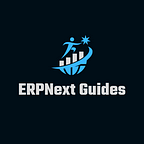Navigating the ERP Landscape: Trends and Future Prospects for SMEs
In today’s fast-paced business world, Small and Medium-sized Enterprises (SMEs) are looking to stay competitive, grow, and adapt to ever-changing market conditions. One crucial tool in their arsenal is Enterprise Resource Planning (ERP) systems. In this 1000-word blog post, we will delve into the evolving landscape of ERP solutions tailored to SMEs and explore the trends and future prospects that can help them thrive in the competitive business environment.
The Role of ERP for SMEs
Understanding ERP
Enterprise Resource Planning (ERP) is a comprehensive software solution that integrates various business processes and functions into a single system. It enables SMEs to manage and streamline their operations more efficiently, reduce manual work, and make data-driven decisions.
Trends in ERP for SMEs
Cloud-Based ERP
The cloud has revolutionized the way businesses, including SMEs, access and use ERP systems. Cloud-based ERP solutions offer flexibility, scalability, and cost-effectiveness. SMEs can now benefit from robust ERP functionalities without the need for significant infrastructure investments.
Mobile ERP
The rise of mobile technology has not gone unnoticed by ERP providers. Mobile ERP applications allow SMEs to access their critical business data and processes from anywhere, enhancing productivity and enabling faster decision-making.
Industry-Specific ERP
Generic ERP systems are no longer the norm. Vendors now offer industry-specific ERP solutions tailored to the unique needs of SMEs in various sectors, whether it’s manufacturing, retail, healthcare, or services. These industry-specific solutions can help SMEs streamline their operations more effectively.
User-Friendly Interfaces
SMEs often have limited IT resources, so user-friendly ERP interfaces are a must. ERP vendors are prioritizing user experience (UX) design, making it easier for SMEs to implement and use ERP systems without extensive training.
Subscription Pricing
The subscription-based pricing model has made ERP more accessible to SMEs. Instead of hefty upfront costs, SMEs can pay for ERP on a subscription basis, spreading the expenses over time.
Future Prospects for SMEs with ERP
Scalability
SMEs need solutions that can grow with them. The future of ERP for SMEs will involve scalability, allowing businesses to expand their ERP capabilities as they grow and their needs evolve.
Artificial Intelligence (AI) Integration
AI is increasingly finding its way into ERP systems. This technology can help SMEs with predictive analytics, automation, and data-driven decision-making. AI-driven ERP can provide insights into customer behavior, market trends, and operational efficiency.
Data Security
As data breaches become more common, SMEs will demand stronger security measures in their ERP systems. The future of ERP for SMEs will involve robust data protection features, including encryption, access controls, and multi-factor authentication.
Integration with E-commerce
E-commerce is a growing revenue stream for many SMEs. Future ERP solutions will integrate seamlessly with e-commerce platforms, enabling businesses to manage online sales, inventory, and customer data in one place.
The Road to a Competitive Future
For SMEs, the path to staying competitive with ERP involves several key steps:
Assess Your Needs
Begin by conducting a thorough assessment of your business needs. Consider your industry, your growth plans, and the specific challenges you face.
Choose the Right ERP Solution
Select an ERP solution that aligns with your needs and offers the features and scalability required to grow with your business.
Implementation and Training
Work with ERP experts to ensure a smooth implementation process. Provide adequate training to your team to maximize the benefits of the ERP system.
Ongoing Optimization
Continuously evaluate your ERP system to ensure it remains aligned with your evolving business requirements. Make necessary adjustments and upgrades as your business grows.
Conclusion: A Bright Future with ERP for SMEs
As the business landscape evolves, SMEs need to stay competitive and agile. ERP systems are no longer exclusive to large enterprises. They have become accessible, scalable, and increasingly tailored to the unique needs of SMEs.
With trends like cloud-based solutions, mobile ERP, and industry-specific applications, coupled with future prospects such as AI integration and enhanced data security, the future of ERP for SMEs looks promising. By taking the right steps in assessing, choosing, and optimizing their ERP systems, SMEs can embark on a journey toward greater efficiency, growth, and competitiveness in the dynamic business world.
